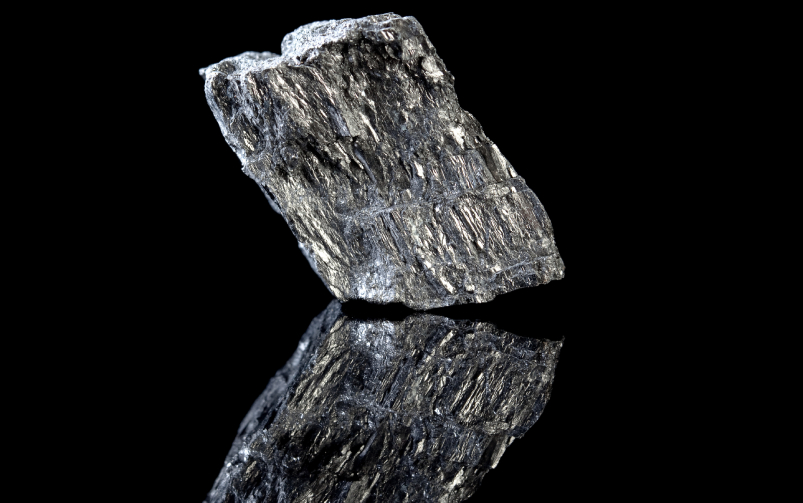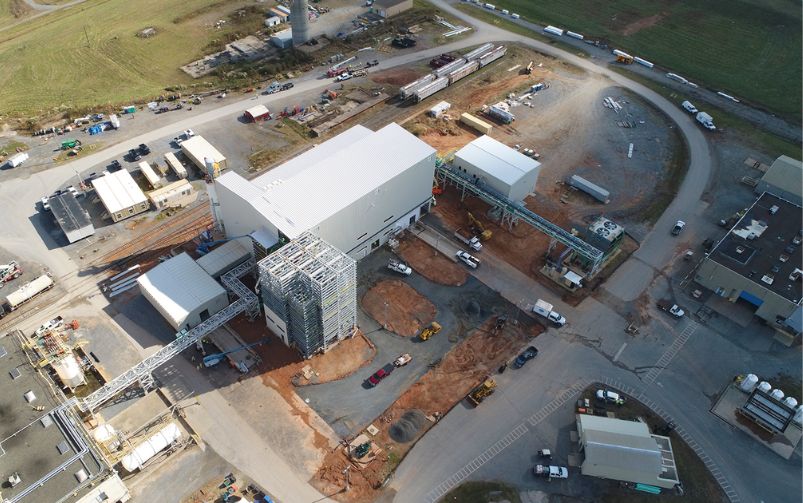The stockpile dome at Teck Metals’ Quebrada Blanca Phase 2 megaproject in Chile, which will start production this year. Courtesy of Teck Metals.
The increasing demand for critical minerals such as copper, zinc and cobalt factored prominently during the first day of the annual Prospectors and Developers Association of Canada’s 2023 conference in Toronto. But a new report, released in time for the convention, forecast that junior and intermediate miners will face exploration budget challenges in 2023 that could slow the project pipeline for those metals.
During the conference’s commodities session on March 5, Randy Smallwood, chief executive officer of Wheaton Precious Metals, highlighted the drivers behind five commodities and potential headwinds facing each metal.
Trends in electrification, growing demand for electric vehicle (EV) batteries and global decarbonization efforts are driving the price of copper upward, with analysts predicting the metal could reach as high as US$7 per pound by 2025.
Smallwood noted that new supply is coming on in the next few years, citing Teck Metals’ Quebrada Blanca Phase 2 megaproject in Chile, which is slated to go into production this year. But a structural deficit of copper production relative to demand for the metal is expected in the next few years. He also pointed out that many copper projects are based in “challenging jurisdictions” that could add to supply instability.
Cobalt is currently “critical” in providing thermal stability to most EV battery chemistries, Smallwood said, and the metal received a boost from the United States’ Inflation Reduction Act’s subsidies for EVs, related infrastructure and lithium-ion battery production. But he added the majority of cobalt is sourced from the Democratic Republic of the Congo, which has a poor human rights record. The metal also faces the risk that new, cobalt-free battery technologies could come into play, he said.
Nickel is running hot given its applications in both consumer and industrial economies and the demand for nickel in EV batteries, Smallwood said, with prices currently around US$11/pound and analysts expecting they could remain anywhere between US$8/pound and US$15/pound in the coming years. New supply coming online from significant deposits in Indonesia could stabilize the market and potentially lower prices, Smallwood said, though he noted “political risk” could come into play when sourcing from the country.
Smallwood also touched on the multi-year outlook for silver, which is experiencing increasing industrial demand from smartphone and electric car makers, thanks to its high conductivity and corrosion resistance. It also has anti-bacterial use cases.
While the metal is highly useful, 70 per cent of silver on the market currently comes from lead-zinc, copper and gold mines. “When…the price moves, there’s not the same level of responsiveness from the supply side,” he said. Analysts anticipate the price of silver could climb as high as US$32/ounce by 2027, but could also drop as low as US$18/ounce from a current roughly US$23/ounce.
Related: Why Canada is uniquely positioned to take a global leadership role in the clean energy transition
Meanwhile, S&P Global Market Intelligence’s recently released World Exploration Trends 2023 report found geopolitical instability and rising inflation hit junior and intermediate miners looking to fundraise in 2022, and the threat of a recession is likely to impact the exploration budgets for companies of all sizes heading into 2023. The firm projected a decrease in exploration budgets of between 10 and 20 per cent year-over-year.
“While economic conditions are expected to improve, with inflation cresting in late 2022 and a resumption of [gross domestic product] growth for most economies expected around the middle of 2023, we are concerned about how exploration budgets will fare in 2023,” S&P wrote in the exploration trends report published for the convention. Junior sector budgets have grown over the past few years, but companies aren’t able to access capital market funding as easily as in 2021, S&P said. It added that majors still have free cash flow to dole out on exploration, but are expected to “budget with caution.”
Kevin Murphy, principal analyst and head of mine economics at S&P Global Market Intelligence — who also presented at the conference — said in the report that 2022 exploration budgets for non-ferrous metals grew 16 per cent from the year prior to just over US$13 billion, but “actual spending for the year, however, should come in lower.”
The junior and intermediate sectors raised a combined US$12.18 billion in 2022, well below the US$21.55 billion raised the previous year. But those funds financed a combined total of 70,008 drill holes, up from 69,000 in 2021.
Canadian juniors saw the biggest exploration dollar increase of US$596 million, to a combined US$2.68 billion. S&P senior analyst Sean DeCoff, however, said in the report that that level of funding is not likely to continue in Canada.
Lithium, nickel and copper explorers reported the highest year-over-year exploration increases in 2022 — at 88 per cent, 45 per cent and 21 per cent, respectively. But in money spent, gold companies dominated, committing US$7 billion.
Smallwood said he sees streaming companies like Wheaton as an ideal source of funding for companies with advanced exploration projects. Streaming agreements tend to base the investment on the value of metal rather than a company’s share price, and is a non-dilutive form of financing, unlike issuing discounted shares to fund exploration.
“Especially in today’s world…there’s not a lot of support for the exploration side. Streaming is a method of supplying some of that capital for advanced projects at the feasibility stage,” he said. “We’ve had great success coming in and supplying that capital because the shareholders are really not there.”




